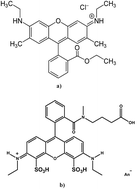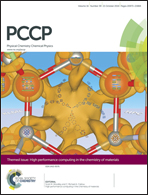The key role of geminate electron–hole pair recombination in the delayed fluorescence in rhodamine 6G and ATTO-532†
Abstract
In this paper we investigate the delayed fluorescence (DF) phenomena in the widely used laser dye, rhodamine 6G, and its derivative ATTO-532 as a function of excitation energy using highly sensitive time-resolved gated nanosecond spectroscopy. Excitation with UV laser radiation results in delayed emission, which arises from singlet states created from geminate pair recombination, not triplet annihilation. For the first time the origins and photo-physical properties of delayed fluorescence in these highly fluorescent molecules are elucidated.


 Please wait while we load your content...
Please wait while we load your content...